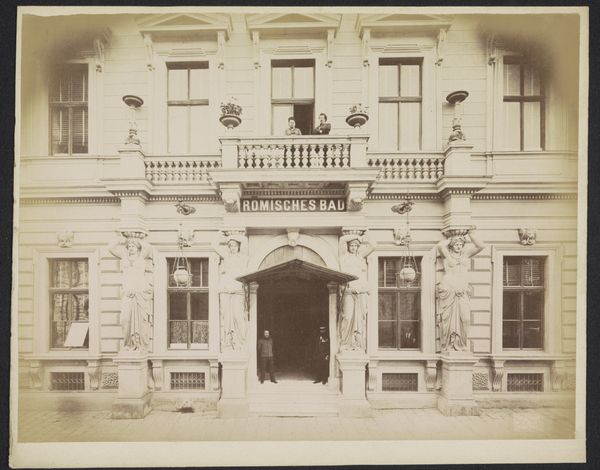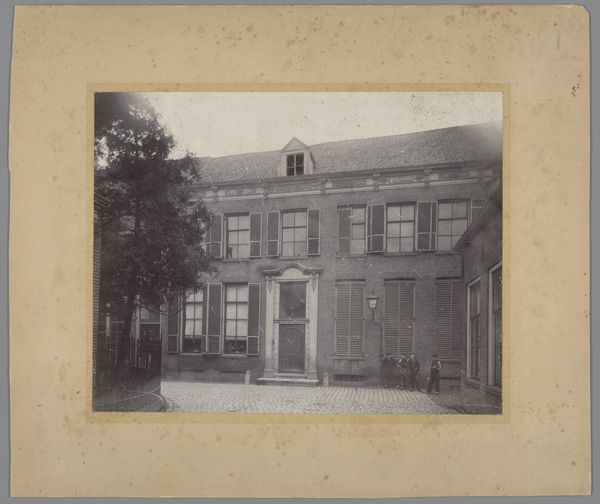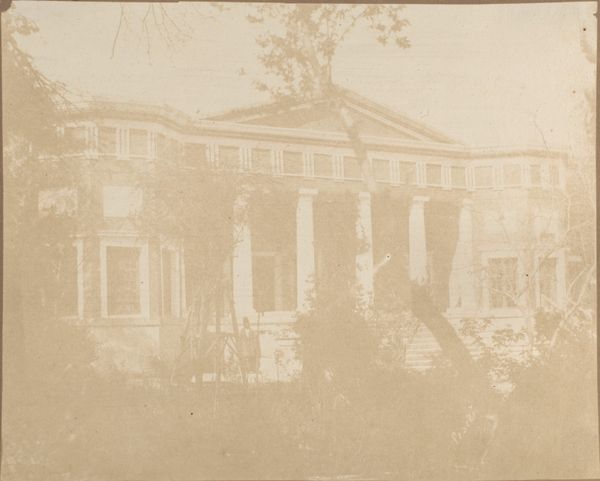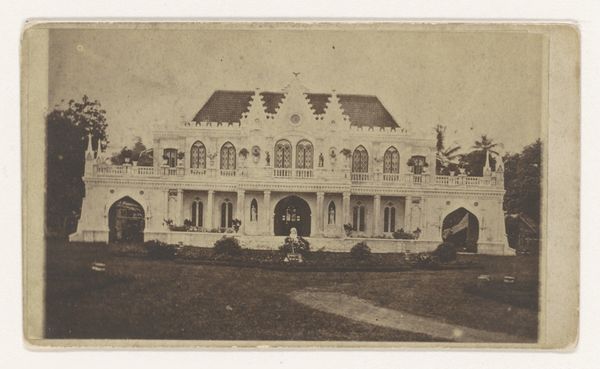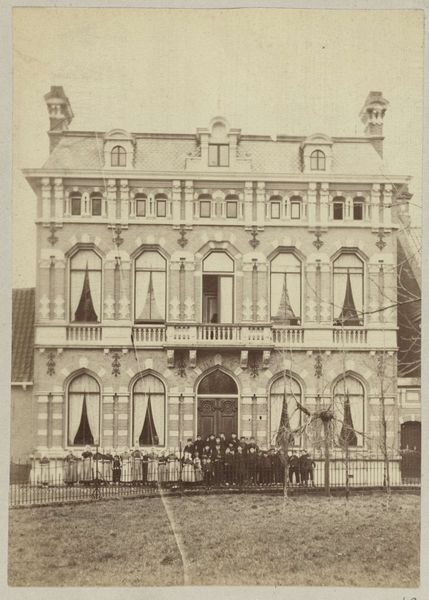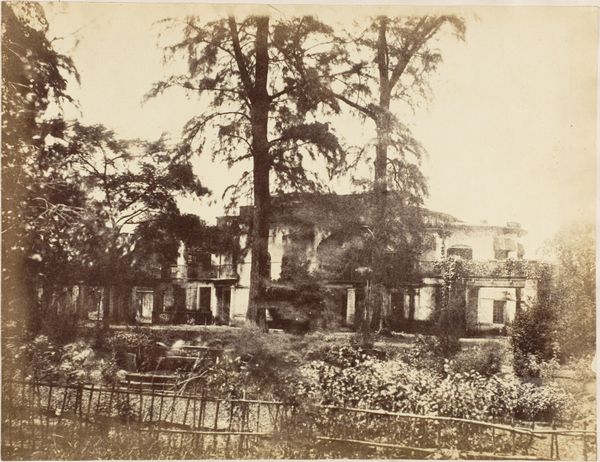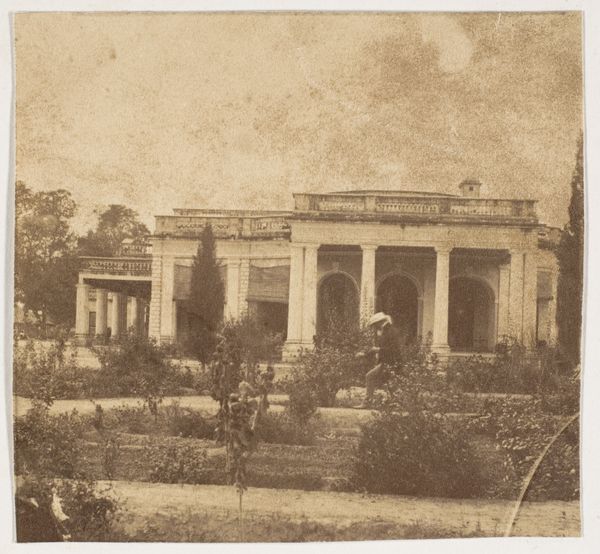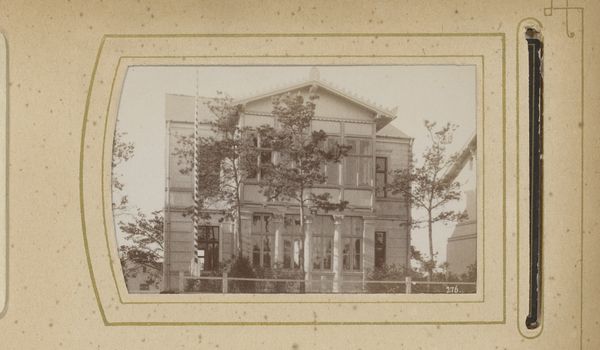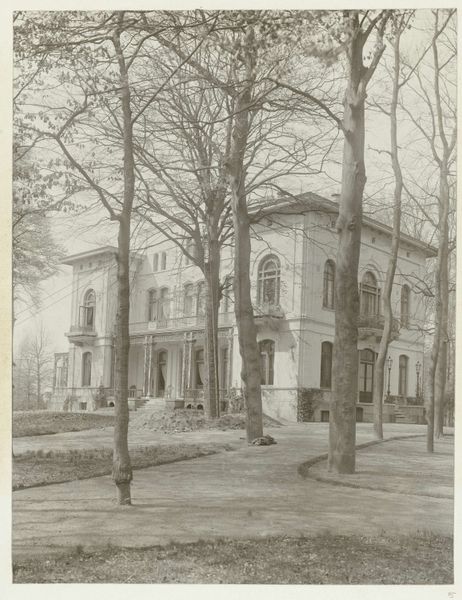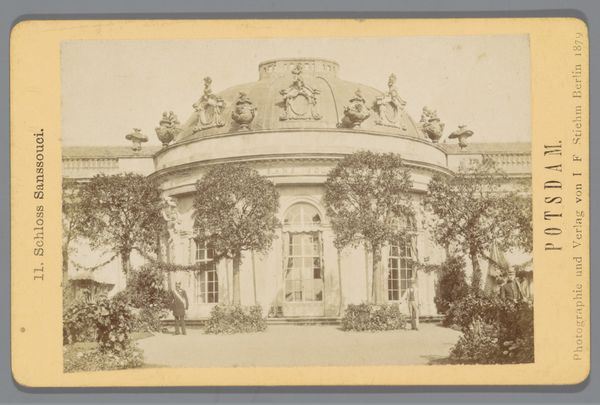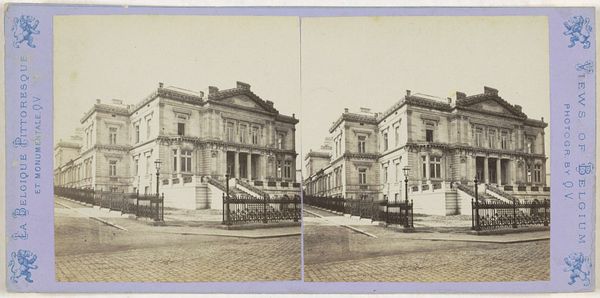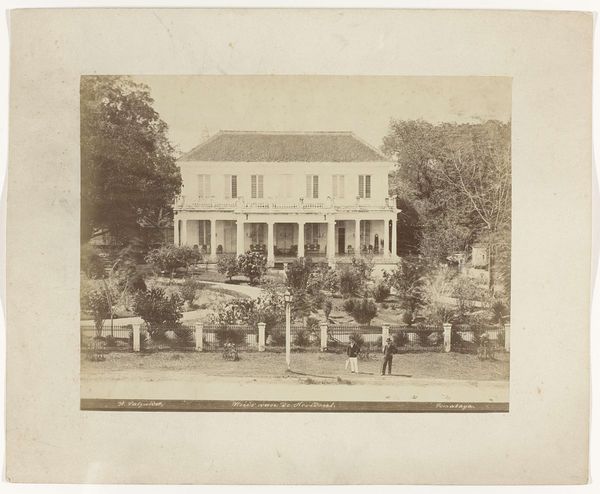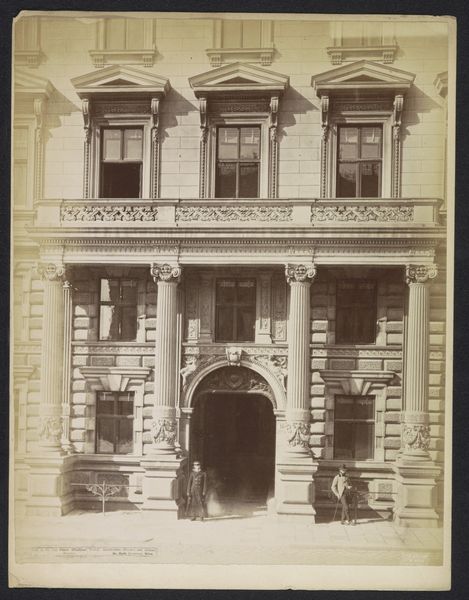
Dimensions: overall: 21.8 x 17.9 cm (8 9/16 x 7 1/16 in.)
Copyright: National Gallery of Art: CC0 1.0
Editor: So this is Eugène Atget’s “Hotel d’Argenson, rue de Grenelle 101”, taken around 1907-1908. The photograph is quite formal, but also quite muted, almost ghostly. I’m intrigued by how Atget captures this grand building seemingly devoid of people. What's your take? Curator: Atget's work, especially this photograph, serves as a critical document of a rapidly changing Paris. While seemingly objective, his photographs actively construct a narrative. Consider the 'Hotel d’Argenson'. What kind of social class or history do you think is represented here through architecture? How did this building serve as a signifier in early 20th century Paris? Editor: Well, judging from the architectural details like the columns, the balcony, and what looks like sculpted figures at the very top, it feels like the building belonged to nobility. The absence of people makes it feel disconnected from modern Parisian life, a relic of an older time. Curator: Precisely. Atget was commissioned to document these spaces, often just before or as they were being demolished or significantly altered. His work raises questions about preservation, the myth of progress, and the role of photography in shaping collective memory. Why do you think there aren't people in the photograph? Editor: Perhaps he was intentionally trying to isolate the building, showing it apart from contemporary life, maybe because capturing people in movement with the technology available would have been difficult. I also feel that not having people gives the picture an everlasting mood to the photo. Curator: Interesting point. Now consider this within the context of Impressionism’s focus on fleeting moments of modern life. What does it mean that Atget, a contemporary of the Impressionists, chose a different path? Editor: That's fascinating! So Atget is capturing something disappearing, turning grand architecture into historical objects rather than everyday places. Curator: Exactly. He pushes us to reflect on the layers of history embedded in the urban landscape, and the politics of remembering and forgetting. It makes me question how much we control history. Editor: This photograph now makes me think not just about a building, but about how a city's history gets curated and presented to the world. Thank you for sharing these views! Curator: A real pleasure! Looking at art this way broadens our perspective and encourages richer reflections, I think.
Comments
No comments
Be the first to comment and join the conversation on the ultimate creative platform.
